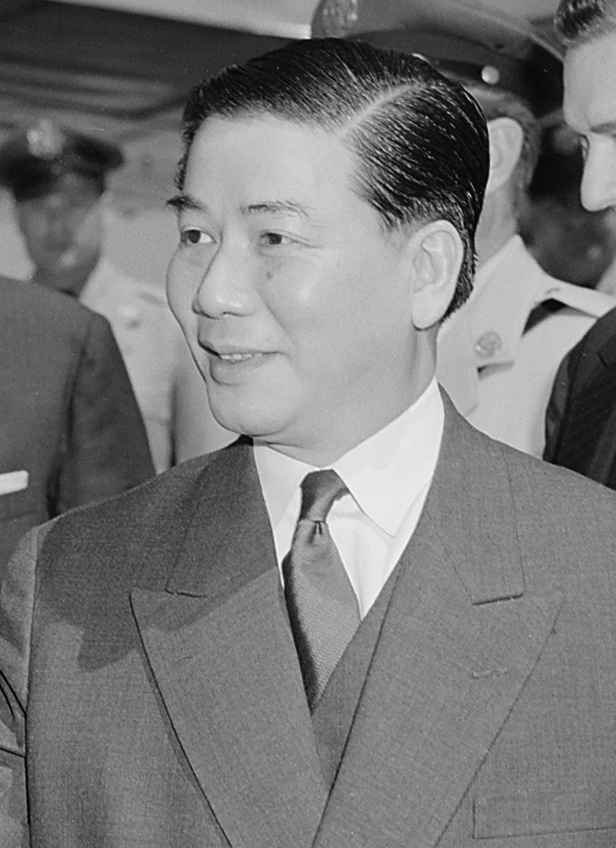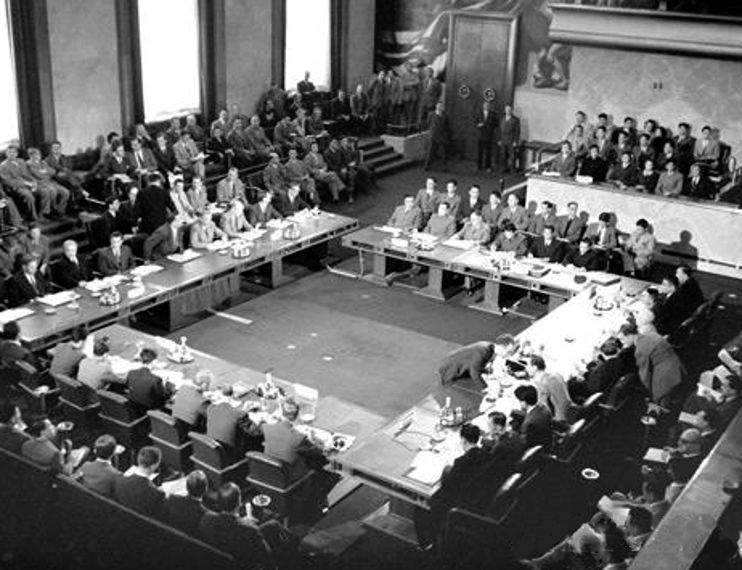|
Commodity Import Program
The Commercial Import Program, sometimes known as the Commodity Import Program (CIP), was an economic aid arrangement between South Vietnam and its main supporter, the United States. It lasted from January 1955 until the Fall of Saigon in 1975 and the dissolution of South Vietnam following the invasion by North Vietnam after US forces had withdrawn from the country due to the 1973 cease-fire agreement. The initiative was a trading plan that was designed to inject large amounts of American capital into the South Vietnamese economy to help fuel its industrialization, growth and self-sufficiency, without incurring the high levels of inflation that would normally occur in such a drastic injection of money. The CIP was a scheme whereby US dollars were given to the South Vietnamese government treasury. Selected businesspeople were given import licenses that allowed them to purchase US dollars with South Vietnamese currency at a rate far below the market value. The importers then used ... [...More Info...] [...Related Items...] OR: [Wikipedia] [Google] [Baidu] |
South Vietnam
South Vietnam, officially the Republic of Vietnam (RVN; , VNCH), was a country in Southeast Asia that existed from 1955 to 1975. It first garnered Diplomatic recognition, international recognition in 1949 as the State of Vietnam within the French Union, with its capital at Saigon, before becoming a republic in 1955, when the southern half of Vietnam was a member of the Western Bloc during part of the Cold War after the 1954 Geneva Conference, 1954 division of Vietnam. South Vietnam was bordered by North Vietnam (Democratic Republic of Vietnam) to the north, Kingdom of Laos, Laos to the northwest, Khmer Republic, Cambodia to the southwest, and Thailand across the Gulf of Thailand to the southwest. Its sovereignty was recognized by the United States and 87 other nations, though it failed to gain admission into the United Nations as a result of a Soviet Union, Soviet veto in 1957. It was succeeded by the Provisional Revolutionary Government of the Republic of South Vietnam, Rep ... [...More Info...] [...Related Items...] OR: [Wikipedia] [Google] [Baidu] |
Geneva Conference (1954)
The Geneva Conference was intended to settle outstanding issues resulting from the Korean War and the First Indochina War and involved several nations. It took place in Geneva, Switzerland, from 26 April to 20 July 1954. The part of the conference on the Korean question ended without adopting any declarations or proposals and so is generally considered less relevant. On the other hand, the Geneva Accords that dealt with the dismantling of French Indochina proved to have long-lasting repercussions. The crumbling of the French colonial empire in Southeast Asia led to the formation of the states of the Democratic Republic of Vietnam (North Vietnam), the State of Vietnam (precursor of the future Republic of Vietnam, or South Vietnam), the Kingdom of Cambodia, and the Kingdom of Laos. Three agreements about French Indochina, covering Cambodia, Laos, and Vietnam, were signed on 21 July 1954 and took effect two days later. Diplomats from South Korea, North Korea, the People's ... [...More Info...] [...Related Items...] OR: [Wikipedia] [Google] [Baidu] |
Ngo Dinh Diem Presidential Visit To The United States
Ngô Đình Diệm, the Leaders of South Vietnam, President of South Vietnam, made a state visit to the United States, the main ally of his government, in 1957. Diệm received a glowing welcome and was heaped with praise as a leader of a "Free world, free country" in the midst of the Cold War. The receptions during the visit were in large part organized by the American Friends of Vietnam (AFV), a lobby group dedicated to resolute US support of South Vietnam and which included many politicians from both major parties. The visit was mainly celebratory and ceremonial, rather than being a policy or planning mission. It was part of a year of travelling for Diệm, as he made a Ngô Đình Diệm presidential visit to Australia, visit to Australia in September, as well as to fellow anti-communist countries South Korea and Thailand. Prior to the visit, the US government and the AFV made thorough preparations to make Diệm's visit pleasant, and the AFV successfully lobbied the media t ... [...More Info...] [...Related Items...] OR: [Wikipedia] [Google] [Baidu] |
Tran Van Chuong
Tran may refer to: Arts and entertainment * ''Tran'' (novel), a novel in the ''Janissaries'' series named for a fictional planet * '' Dr. Tran'', an animated miniseries People * Trần (陳), a Vietnamese surname, including a list of people named Trần or Tran * Tran, member of the Nazi-era comedy duo Tran and Helle Other uses * Tran, Bulgaria, a small town * Trần dynasty The Trần dynasty (Vietnamese language, Vietnamese: Nhà Trần, chữ Nôm: 茹陳; Vietnamese language, Vietnamese: triều Trần, chữ Hán: ikt:朝ikt:陳, 朝wikt:陳, 陳), officially Đại Việt (Chữ Hán: 大越), was a List ..., 陳朝 a Vietnamese dynasty from 1225 to 1400 See also * * * Trana (other) * Trans (other) * Tron (other) {{Disambiguation ... [...More Info...] [...Related Items...] OR: [Wikipedia] [Google] [Baidu] |
Michigan State University Group
The Michigan State University Vietnam Advisory Group (commonly known as the Michigan State University Group and abbreviated MSUG) was a program of technical assistance provided to the government of South Vietnam as an effort in state-building by the United States Department of State. From 1955 to 1962, under contract to the International Cooperation Administration in Washington and the Vietnamese government in Saigon, faculty and staff from Michigan State University (MSU) served as consultants for agencies of the Ngô Đình Diệm regime. The group advised and trained Vietnamese personnel in the disciplines of public administration, police administration, and economics. MSUG worked autonomously from most US government agencies, had unmatched access to the presidency, and even assisted in writing the country's new constitution. Several of its proposals were undertaken by the Vietnamese government and had positive results for the people of Vietnam. However, the group had limited infl ... [...More Info...] [...Related Items...] OR: [Wikipedia] [Google] [Baidu] |
Phan Quang Dan , a tray with a pedestal, used often for ritual offerings
{{Disambiguation ...
Phan may refer to: * Phan (surname), a Vietnamese family name * Phan District, Chiang Rai Province, Thailand * Phan River, Bình Thuận Province, Vietnam * Phan (tray) Phan (, ) is an artistically decorated tray with pedestal. It is common in Thailand, Cambodia, and Laos. Description A phan is normally round and comes in different sizes. The usual measures range between a diameter of 20 cm to about 50 ... [...More Info...] [...Related Items...] OR: [Wikipedia] [Google] [Baidu] |
Eisenhower Administration
Dwight D. Eisenhower's tenure as the 34th president of the United States began with his first inauguration on January 20, 1953, and ended on January 20, 1961. Eisenhower, a Republican from Kansas, took office following his landslide victory over Democratic nominee Adlai Stevenson in the 1952 presidential election. Four years later, in the 1956 presidential election, he defeated Stevenson again, to win re-election in a larger landslide. Eisenhower was limited to two terms and was succeeded by Democrat John F. Kennedy, who won the 1960 presidential election. Eisenhower held office during the Cold War, a period of geopolitical tension between the United States and the Soviet Union. Eisenhower's New Look policy stressed the importance of nuclear weapons as a deterrent to military threats, and the United States built up a stockpile of nuclear weapons and nuclear weapons delivery systems during Eisenhower's presidency. Soon after taking office, Eisenhower negotiated an en ... [...More Info...] [...Related Items...] OR: [Wikipedia] [Google] [Baidu] |



